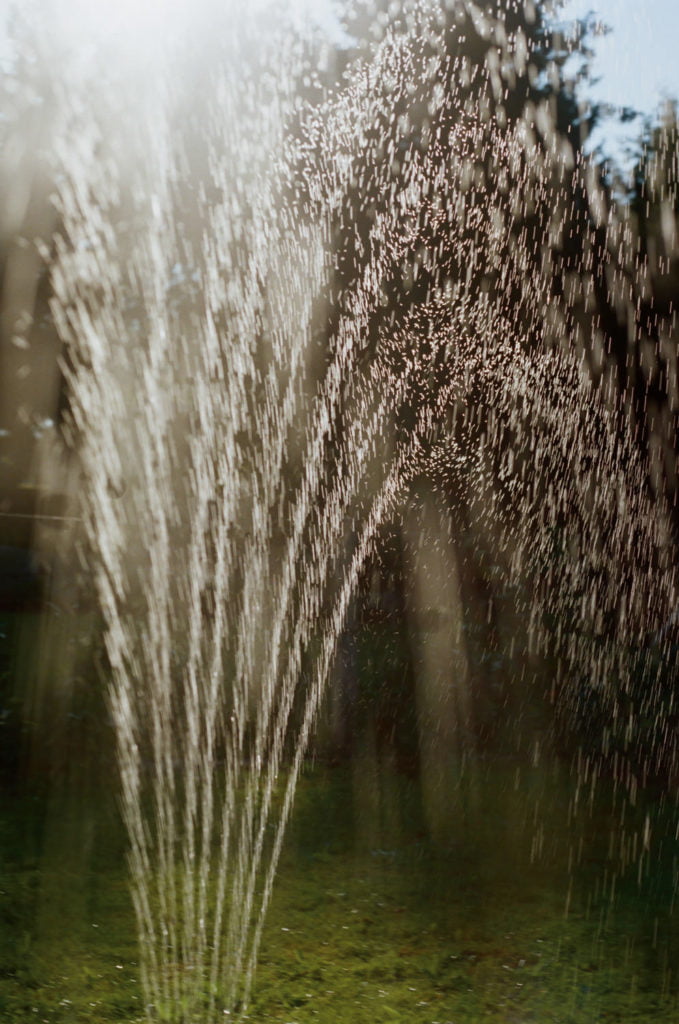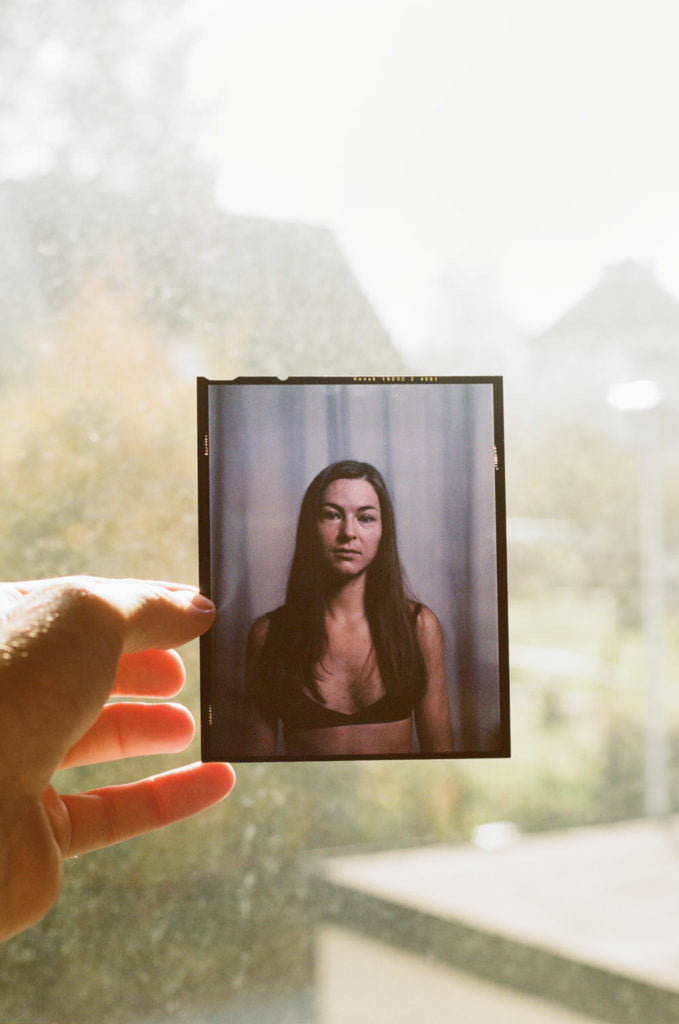Paul Kranzler
Valley
In 1954 Herr B. put up a garden shed.
In 1963 he submitted plans to the Leonding local council to build a small single-storey house.
Another application was made in 1971 to build a second storey and put up a double garage complete with a basement storage space.
An extension was added in 1979, along with a new staircase. In the course of this work the façade of the house was line on three sides with Eternit [fibre cement] cladding. Herr B. did most of the work himself, with the help of the master builder Wöhrer from Traun.
Herr B. lived in the house with his wife Paula. The ground floor and the first floor each comprised two apartments with an identical floor plan.
But they only lived in the ground-floor apartment.
The first floor was set aside. Initially for the children that Herr and Frau B. wanted, but never had.
Later, the apartment on the first floor was kept free for the carer that Herr and Frau B. felt they would need in their old age.
Separate electricity and gas meters were installed to make sure both apartments could be autonomous.
Paula B. died around 1985.
Thereafter Herr B. lived in the big house on his own, doing maintenance work, getting the roof space insulated,
and laying out a terraced garden on the steeply sloping plot of land, complete with orchard, a greenhouse for vegetables, and a beehive.
He even had a flower meadow planted for his bees, and twice a year he would mow it with a scythe.
Herr B. died at the age of 89, having lived alone in the house right until the end.
As there were no close relatives, a cousin was named as the heir.
The cousin himself was already over 80 and so he bequeathed the house to his son, who opted to sell the property.
The land consisted of two plots in a sought-after residential area on the outskirts of the city.
The plot with the house and the un-built plot were put up for sale separately.
The house was cleared out completely, from cellar to attic, from garage to beehive, and the bee colonies were relocated to a neighbouring beekeeper.
In mid-2014 the house and the adjoining piece of land were advertised and sold.
Paul Kranzler
Paul Kranzler, born 1979 in Austria; based in Austria and Leipzig, Germany.
www.paulkranzler.com
The everyday realities of life and social settings are key themes of Paul Kranzler’s photographs. Kranzler likes to capture people he knows in their surroundings, his next- door neighbours for instance in the work entitled Land of Milk and Honey (2005), or a young man and his family in Tom (2007). In the series entitled Brut (2010) that followed these projects the artist focused on his own relatives, his parents, grandparents, aunts, and siblings. Valley expands on Brut both thematically and formally, with Kranzler focusing in even more as he photographs his own nuclear family in their home and living environment outside Linz. His partner and children are captured mainly using Kranzler’s typical medium format. In this group of works as in the previous works mentioned above, he again combines portraits with still-life-like details of home interiors and with landscape views to visualise the living environment. While the depiction of spatial context in Land of Milk and Honey and Tom with its socio-documentary style served to characterise the living conditions of the protagonists, here it suggests the personal experience of the artist’s own home and family. And while the setting is captured through architecture photographs of the family’s home or photographs of the residential estate on which it is located, it is rendered for the most part extremely subjectively. Not only does Kranzler photograph incidental motifs such as a braid of hair, an illuminated children’s tent or a corner of the garden, he also alienates individual motifs, for instance by producing sparks with a lighter during a long-term exposure; in the image they are then rendered as abstract flecks of colour. The artist also likes to zoom in very close to his motifs. Due to the tight cropping, people and objects are often captured merely as a visual fragment. The question of whether this particular perspective that emphasises detail is founded on an exploration of the technical conditions of the camera and the documentary nature of photography immanent in the medium itself can only be hinted at here. In any case, by using these formal means, the artist inscribes himself in his photographs and gives expression to a specifically subjective perspective that tends to visualise more personal impressions and moods than factually replicating a reality of life. This approach is further accentuated by the mosaic-like sequence of the photographs. Professionally composed photos and snapshots alternate, evoking not so much a causal narrative as an associative reading. In Land of Milk and Honey Kranzler used a bright camera flash much in the same way as Manfred Willmann in his classic volume Das Land (1981–93), but here the light is more subtle, due to the long-term exposure and the indirect lighting. As a result Valley is characterised by a poetic basic tone, which according to the artist, is due not least to the fact that here he is photographing his own family. While the work can be read as an autobiographical self-observation, its appeal lies in the fact that, over and beyond a purely subjective perspective, Kranzler replicates places and moods that will certainly be familiar to many spectators. The home itself and the neighbourhood are prototypical of the unspectacular suburbs to be found in Austrian conurbations; the bathroom decorated with pale pink tiles is characteristic of interiors from the 1980s. And so Valley alternates between a photo essay and an expanded (family) portrait, and in terms of content between a characteristic image of Austria and private introspection.
Walter Moser is a photo historian. He studied art history in Vienna and Rome and since 2011 he is the director of the photographic collection of the Albertina in Vienna. Publications and exhibitions on the history of photography: Film-Stills. Fotografien zwischen Werbung, Kunst & Kino.




















